
A Helicopter Mechanic Apprenticeship Program - Could it Work at Your Place of Employment?

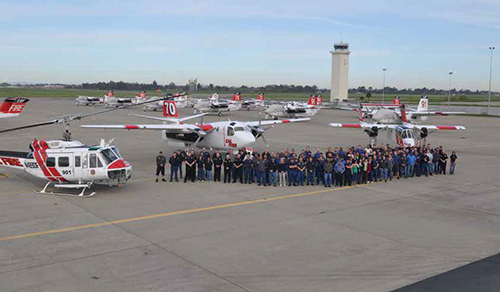
If you have been following our articles on the global helicopter mechanic shortage, then you know this is a very real and urgent situation for our industry. As with many issues that we face today, there are many possible ways to tackle a problem. Some are easy, some less so, some expensive and some are less expensive.
There is more than one way to deal with this shortage. In this article and a few others that will appear in future issues of HMM, we will talk with some individuals who have a helicopter mechanic apprenticeship program at their place of employment. It works for them and might work for your company, too.
What is an Apprenticeship?
An apprenticeship is a combination of on-the-job training (OJT) and related classroom instruction under the supervision of a journey-level craft person or trade professional in which workers learn the practical and theoretical aspects of a highly-skilled occupation. After completing an apprenticeship program, the worker’s journey-level status provides an additional benefit of nationwide mobility at journey level scale.
In my travels to schools that offer airframe and powerplant (A&P) or aviation maintenance technology (AMT) programs, I get asked one question more than any other: “All the possible employers that I have contacted want to know if I have at least three years of helicopter maintenance experience. I have my license, but how do I get that experience?” That is a great question and I don’t have a great answer. However, a partial solution might be a helicopter mechanic apprenticeship program.
One such company that is having great success with an aviation mechanic apprentice program is DynCorp International (DI). Its apprentice program is at McClellan Air Park, just outside Sacramento, CA. I use the term aviation mechanic rather than just helicopter mechanic as their apprentice program supports both fixed-wing and rotary-wing aircraft. Having said that, let me turn it over to Jeff so that he can explain how their program is so successful.
CAL FIRE
There has been a slow, yet steadily increasing shortage of licensed, qualified mechanics to provide aircraft maintenance for the many different aircraft types operated by the U.S. military, as well as commercial airlines, business aviation and specialty aviation providers. This decline is moving like an unstoppable lava flow toward becoming a “critical mass.”
The California Department of Forestry and Fire Protection (CAL FIRE), a specialty aviation provider, operates more than 50 aircraft for use in the suppression of wildland fires and has faced this challenge head on. CAL FIRE operates a mixed fleet of aircraft, 40 fixed-wing aircraft and 12 UH-1H “Super Hueys” rotorcraft. All maintenance work is contracted out to help them be mission ready and minimize costs at the same time. Its current maintenance provider is DynCorp International.
Due to the highly-specialized nature of the aircraft, finding mechanics that had previous experience performing maintenance on these aircraft types was, and still is, difficult.
“Most of the aircraft in CAL FIRE’s fleet are 1960s vintage aircraft that have been significantly modified,” sayes Tim Huber, operations manager for DynCorp International’s CAL FIRE program. “Most of the mechanics who are familiar with these airframes have long since retired.”
To help meet program goals, DI has developed a relationship with the Sacramento City College (SCC) aeronautics program. DI works with them to actively recruit current students and recently-graduated A&P program students. Location-wise, this is great for both students and graduates as CAL FIRE’s maintenance depot is conveniently located near the school.
The relationship was established with an initial goal. DI had an opening for a technician helper position and reached out to see if Sacramento City College had any graduates they could recommend. A recent graduate with an A&P license was recommended, interviewed and subsequently hired. DI was pleased with the new employee’s work ethic and overall knowledge, while CAL FIRE was pleased with the timeliness of getting another technician on site to get the fleet of aircraft ready for fire season.
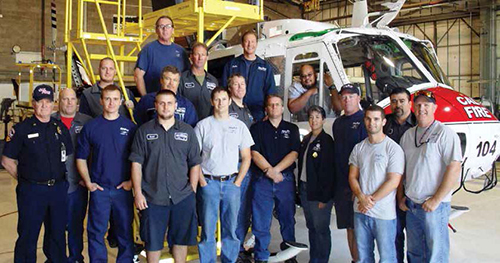
After the initial hire, DI and SCC officials met to discuss common interests. DI wanted additional information about the aeronautics program, specifically the program class schedule. The SCC aeronautics program was interested in connecting students with potential employers after completion of the program. Both parties decided that a working internship program would be mutually beneficial.
“Our ongoing working relationship between Sacramento City College’s aeronautics department and DynCorp International’s CAL FIRE aviation program has been of great value to both DI’s CAL FIRE program and SCC’s aeronautics program,” says Phillip Cypret, the aeronautics department chairman at Sacramento City College, “but most of all to the aircraft mechanic students that have been fortunate enough to be selected by DI as mechanic helpers during the years. The mission of the aeronautics department is to train students with the skills and knowledge required of an aircraft mechanic, and to instill a sense of work ethic and responsibility that will ensure their success on the job.
“This is an excellent opportunity for our students,” continues Cypret. “When DI notifies the faculty that there are openings in the mentorship program, an announcement is made to students who are close to completing the program. The announcement talks about the schedule, the tasks and the commitment required. Interested students then contact the DI representative and express their interest in applying.”
CAL FIRE has been pleased with the program as well.
“There is a huge advantage to CAL FIRE in supporting a relationship between our maintenance contractor DynCorp International and the local Sacramento City College aeronautical program,” says Marty Buno, CAL FIRE’s director of maintenance. “The college has the ability to use this as an incentive program for their students to work hard in the program and succeed academically in order to be selected by the employer for this internship opportunity. DI wants to hire highly-motivated individuals who are well educated and place them in a mentoring program specifically designed to support their customer.”
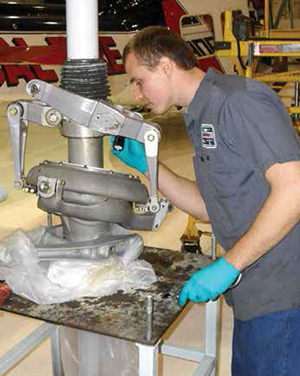
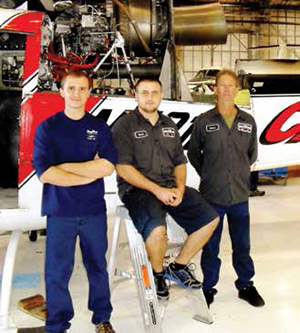
For those selected, the working internship program is not an easy one. A typical day consists of reporting to the CAL FIRE maintenance depot between 6 and 7 a.m. and working until 3:30 p.m. The interns then head to class from 4 to 10 p.m. This happens every week day during the school year (typically from September to May). Interns can earn up to $20 per hour with the additional benefit of learning practical applications of aircraft maintenance.
Employees typically start as a technician helper with job duties including de-paneling aircraft, cleaning parts, re-stocking consumable part bins, sweeping floors and emptying trash. As the employees gain experience, they begin to perform hands-on work on the aircraft under the watchful eye of a lead technician. As openings become available, employees can be promoted to apprentice technician, journey technician, base mechanic, quality control inspector and, ultimately, lead technician. This promotional ladder provides a long-term career path for every employee.
“Getting an A&P license is a really good start for a career,” says Jon Robbins, CAL FIRE maintenance officer for the helicopter program. “By achieving FAA mechanic’s certification, an applicant allows us to focus on the person, their attitude and capabilities more than we might with a person who has 10 years of experience. With experienced people we tend to focus on how that experience might help us rather than how a person might fit with a program. Obviously, a solid program needs both things, but I find it really satisfying when a new mechanic earns the respect that comes from their willingness to learn, and gaining the perspective that comes from experience. Our obligation is to offer training that is hopefully as diverse as the A&P school offers. It’s hard to do.”
DI also provides financial assistance to its employees who participate in the SCC program, including tuition reimbursement, exam fees and oral/practical testing fees. The amount of financial assistance depends upon the grades and scores the employee earns in classes and on exams.
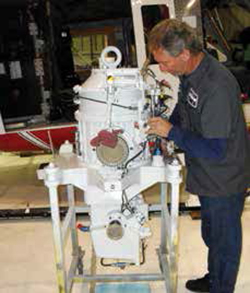
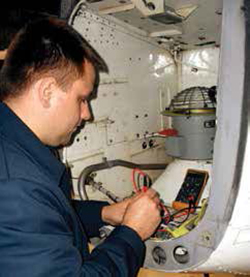
DI and Sacramento City College continue to refine and improve the apprenticeship program.
“The State of California ultimately benefits from the rewards of these partnerships by having highly-trained, safe and cost-effective employees performing the work on our wild land firefighting aircraft,” says Buno. “This process has developed a solid foundation for our maintenance program and is one of the reasons why we are the leader today within this industry.”
About DynCorp International
DynCorp International is a global services provider offering unique, tailored solutions. Built on more than six decades of experience as a partner to commercial, government and military customers, DI provides sophisticated aviation, logistics, training, intelligence and operational solutions wherever needed. DynCorp International is headquartered in McLean, VA.
About Sacramento City College
Sacramento City College was the first institution of higher education in Sacramento, and the seventh community college to be accredited in California. It currently serves more than 23,000 students on a main campus, two educational centers (in West Sacramento and Davis) and the aeronautics program at McClellan Air Park. Students can choose from more than 120 different degree and certificate programs. More information is available at www.scc.losrios.edu.
I hope this gave you some thoughts on how to make a program like this workable for your company. If you would like to talk about this with Jeff, you can send e-mail to him at jeffrey.cavarra@dyn-intl.com.
